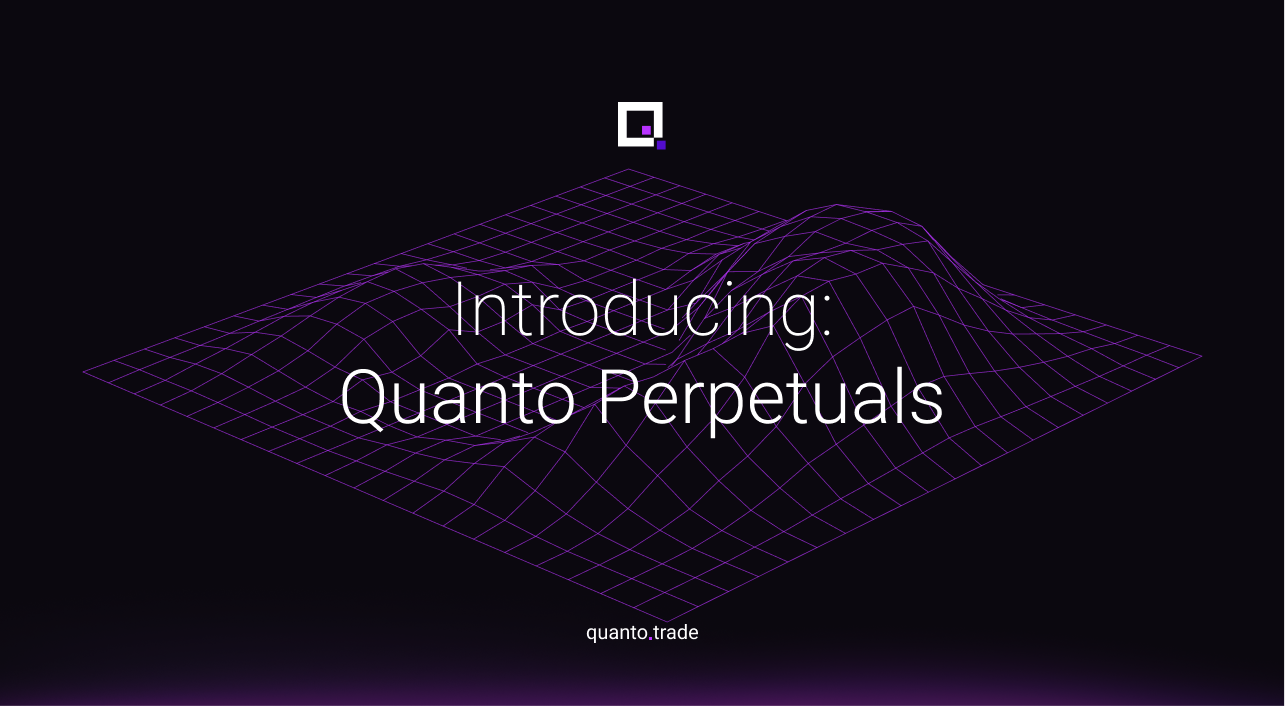What are Quanto Perpetuals?

Quanto Perpetual Contracts
Quanto introduces a novel class of perpetual derivatives known as quanto perps, where all trading pairs are denominated in the platform’s native token, $QTO, regardless of the underlying asset. This means that profits, losses, and liquidations across all markets—including majors such as BTC, ETH, SOL, and meme coins—are quantified and settled in $QTO.
Whether a user deposits BTC, ETH, SOL, USDC, or any other supported crypto asset as collateral, the contract itself remains denominated in $QTO. This design enables cross-collateralized exposure while preserving a consistent risk model across assets.
Quanto.trade offers Quanto Perpetual Contracts in US Dollars. This allows exposure to the US Dollar price of an asset, without needing to hold US Dollars / Tether or the asset directly.
The following information assumes usage of the “COIN/USD” perpetual contract as an example. Information is generalisable to all Quanto Perpetual contracts. Please check the contract specifications directly for that information.
A Quanto COIN/USD perpetual contract has a fixed Quanto multiplier regardless of the USD price of COIN. This allows traders to go long or short the COIN/USD exchange rate without ever touching COIN or USD. Traders will post margin in one of the 400+ coins supported as collateral on Quanto.trade, and make or lose QTO as the COIN/USDT exchange rate changes.
How are Quanto Perpetuals Quoted?
The COINUSD perpetual’s underlying is the COIN/USD exchange rate as recorded in the underlying index. The contract is quoted in USD and all margin and PNL calculations are denominated in Quanto.
*Assumes USD/USDT rate of 1.
Traders who think that the price of COIN will rise will buy the perpetual contract. Conversely, traders who believe the price will drop will sell the perpetual contract.
Trade Inception
In a quanto perpetual contract, you're trading the price movement of one asset (e.g., ETH/USD), but the profits and losses (PnL) are settled in a different asset—the quanto asset (QTO). This creates a layer of abstraction where:
- The contract tracks an external price (like ETH/USD).
- The PnL is realized in a fixed multiplier of a separate token (like QTO).
- Traders don't need to hold or post margin in the asset being tracked—only in the quanto asset.
Margin and Leverage
All true underlying margin is posted in $QTO, which means traders can go long or short this contract using any collateral, but the margin is calculated only in QTO. Most Quanto Perpetuals feature a leverage between 10x and 100x.
Settlement
As this contract is perpetual, there is no settlement (subject to Liquidation).
Note: since this product is a perpetual contract, funding occurs every hour (usually 8 hours). Please see the Funding Section for more information, and for the current rates please see Funding Rates on each pair in the Quanto-Perps trading interface.
Key Concepts
- Abstracted Exposure
You're not directly buying or selling ETH or SOL. You're entering a synthetic position whose PnL is settled in QTO, while exposure follows the tracked asset’s price (e.g., ETH/USDT). - Fixed Multiplier
The only constant in a quanto contract is the multiplier (e.g., 0.0001 QTO per $1 move). This multiplier determines how much PnL you earn or lose per unit of price change in the tracked asset. - PnL Comes from Price Movement Only
The PnL is determined strictly by the price difference in the tracked asset (e.g., ETH/USDT), multiplied by the contract size and multiplier. The PnL itself is always quantified in QTO, regardless of what asset is being tracked. - Value and Collateral in QTO
All margin requirements, liquidation thresholds, and payouts are handled in QTO, not the asset being tracked (e.g., not in ETH or USDT). This means users must understand that even if ETH goes up, their profits are in QTO, which introduces secondary risk if QTO fluctuates.
A degree of flexibility and capital efficiency that isn't achievable on conventional derivatives platforms is made feasible by quanto perpetuals. With just one unit of account, $QTO, traders can use their whole portfolio, including BTC, ETH, SOL, USDC, meme coins, and even NFTs as collateral.
